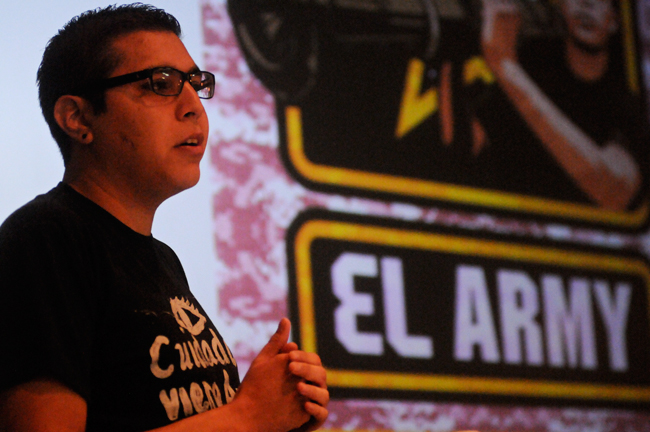Expert panelists shared their views on the overabundance of government surveillance in modern society and compared it to regulations of the past for students and other members of the UT community Monday. In an event titled “Surveillance, Space and the Public,” put on by the Humanities Institute and Hoffman Lectureship, panelists shared their personal insights and recent work in an effort to better inform the UT community of local political situations. Panelists included Simone Browne, assistant professor in the Departments of Sociology and African and African Diaspora Studies; Micha Cárdenas, a doctorate student in Media Arts and Practice at the University of Southern California; and Ernesto Montejano, a political artist who focuses on issues within the Latino community.
Browne spoke first and explained the history of police surveillance in the U.S. and New York City, comparing regulations of the past with those of the present.
“How can the past allow us to ask questions about our present?” Browne asked.
She said a current issue of controversy in New York City is the enforcement of stop-and-frisk laws.
The laws allow New York City police to stop and question people they suspect of unlawful activity and frisk those they suspect are carrying weapons.
Browne said the laws have been used to illegally target blacks and Latinos and can be an infringement on constitutional rights. She said the laws prompted the American Civil Liberties Union to create a mobile application that someone being subjected to such a search can use to send out an alert.
Cárdenas said similar discrimination has occurred in Los Angeles.
Montejano spoke last and presented several pieces of her artwork. Each was in protest of governmental activities or agencies.
One piece was a poster of Edmund “Bubba” Gutierrez, a friend of his brother’s who Montejano said was beaten to death by police after running from them after being pulled over.
After the lectures, participants moved into small discussion groups facilitated by students from architecture professor Patricia Wilson’s Participatory
Democracy class.
Economics freshman Brian Hellemn, one of the discussion facilitators, said the discussion offered a unique perspective that many could learn from.
“I think in the end it was interesting how they all tied it into basic social injustices,” Hellemn said.
The three speakers said they would urge members of the UT community to become more aware of their surroundings.
“It’s just having a critical conscious,” Browne said.
Printed on Tuesday, November 6, 2012 as: Panel reveals police racial bias





















